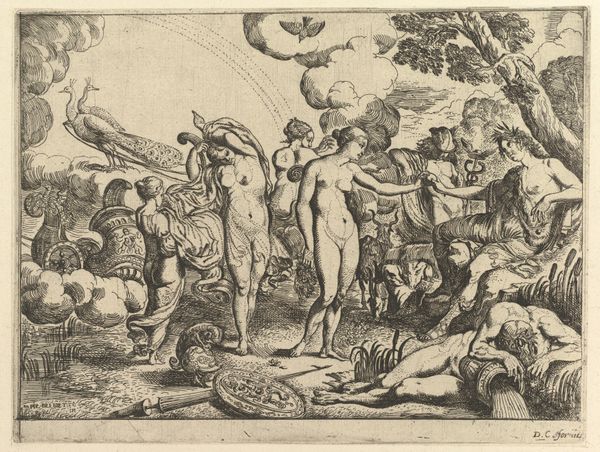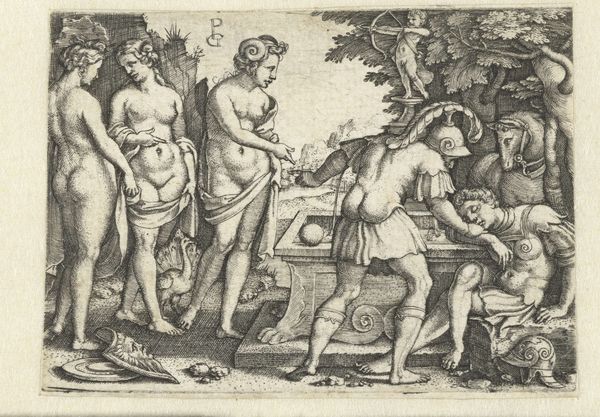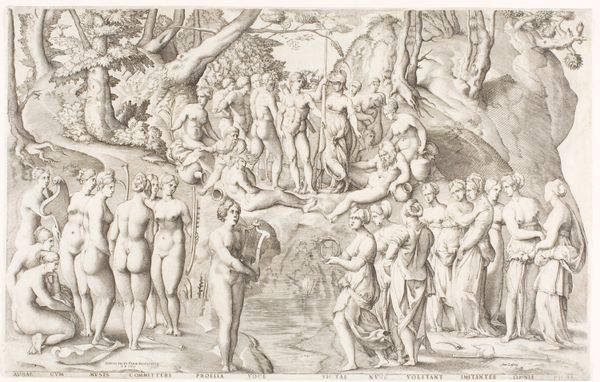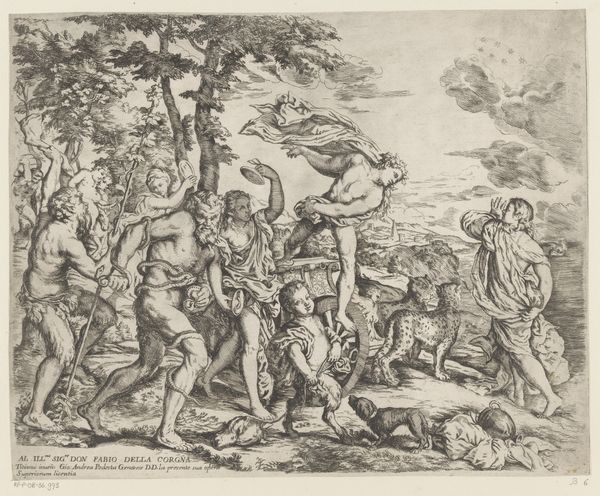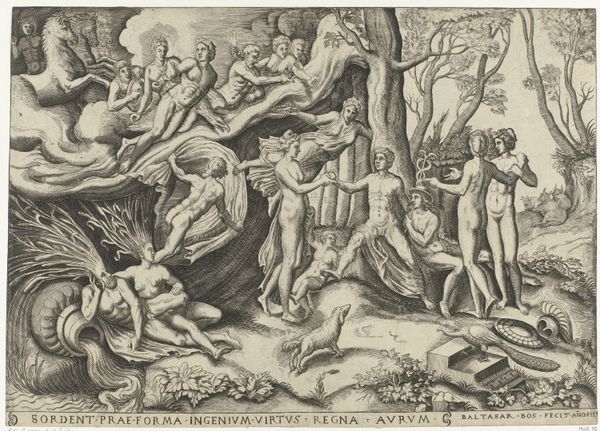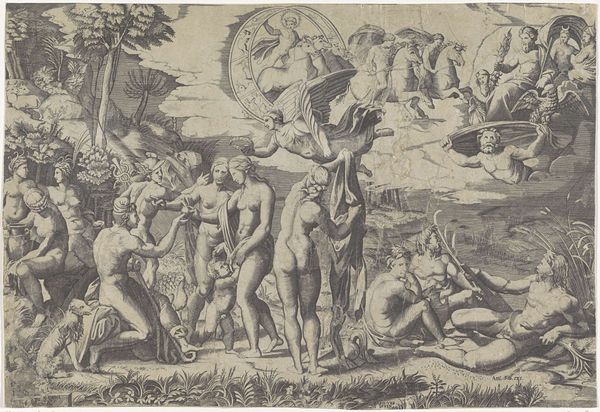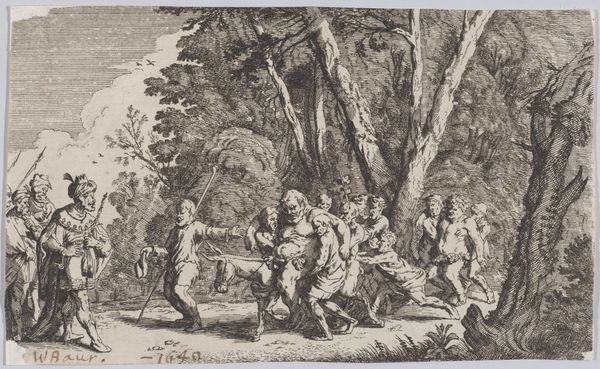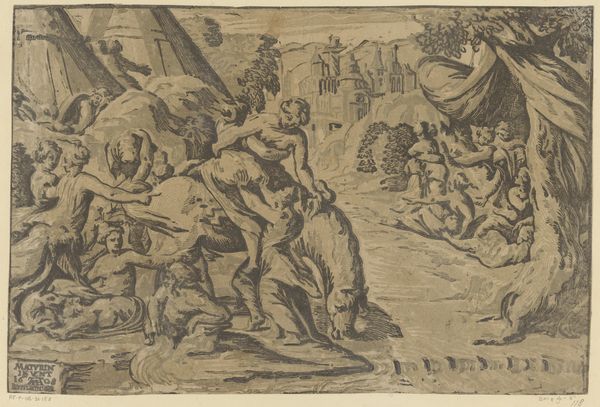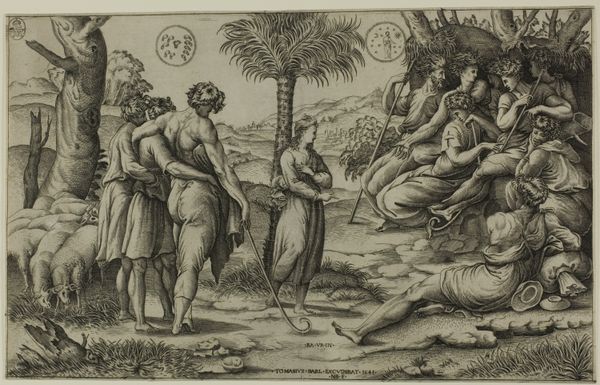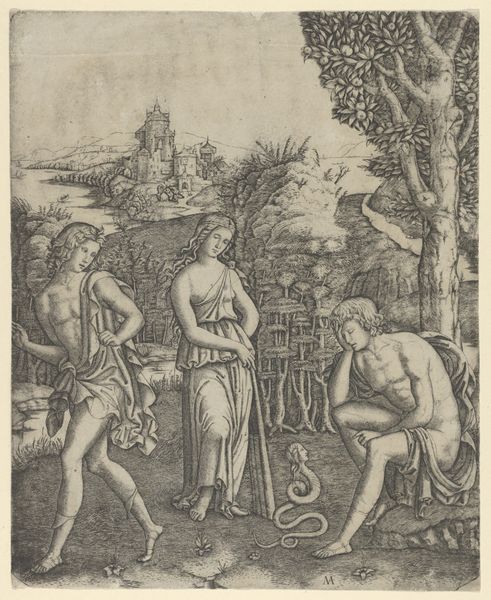
drawing, print, engraving
#
drawing
#
ink drawing
#
narrative-art
# print
#
figuration
#
11_renaissance
#
female-nude
#
child
#
horse
#
history-painting
#
italian-renaissance
#
engraving
#
male-nude
Dimensions: sheet: 9 1/4 x 13 3/4 in. (23.5 x 35 cm)
Copyright: Public Domain
Curator: Giulio Bonasone gives us "Alexander and Roxana," an engraving created sometime between 1531 and 1576. It resides here at the Metropolitan Museum of Art. What are your initial impressions? Editor: Chaos, but ordered chaos. It's incredibly dense with figures, but the linear perspective creates a clear spatial recession. It has an energetic but controlled feel to it. Curator: Precisely. The engraving medium itself, the precise carving into the metal plate, necessitates a degree of control. Consider how the artist used hatching and cross-hatching to achieve tonal variations. What does this tell us? Editor: Well, the cross-hatching obviously helps build up shadow and form. And in this instance, it's all done by hand, laboriously etched one line at a time using a burin. This reproductive process emphasizes the craft inherent in even these seemingly "high art" subjects from mythology or literature. Curator: Yes, and consider the visual impact. Note the contrapposto of the figures, their idealized forms derived from classical sculpture, but consider their arrangement within the pictorial space. Is it purely representational, or does something else strike you? Editor: I'm drawn to the repetition of bodies and poses, this choreography hints at the theatrical, perhaps reflecting an engagement with the material reality of early Renaissance performance, maybe in celebrations? Curator: It is certainly suggestive, and I wonder whether we may also consider the distribution network in this age and this process to reproduce an image and make it available on different locations and to diverse public audiences? It is about creating art and selling dreams. Editor: It’s easy to see this in purely formal terms, and get lost to symbolism and classical references. Curator: Granted. The medium and its socio-economic function is the essential key in order to comprehend Renaissance printmaking! Editor: Yes, because through them we realize and question the artistic and labor conditions. Thank you for sharing these nuances! Curator: Thank you for sharing those important remarks!
Comments
No comments
Be the first to comment and join the conversation on the ultimate creative platform.

